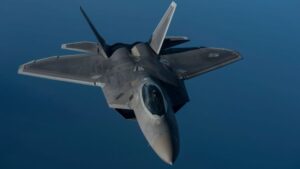Mosul, Iraq, was not the place to be in the spring and summer of 2004. Extreme heat, incessant insect swarms, and mortars that could drop any second—definitely a hellhole for those deployed there.
Evenings were a little break, at least. Fewer bugs crawled into your ears and mouth, and the river breeze was like a cold beer after a long hike. Still, mornings were an oven, and you were always on edge, waiting for the next boom.
One evening, as we were trying to catch a break from the madness, a rocket came screaming and immediately yanked us back to reality. It was a damn wake-up call.
We knew the score, but that close call was a cold shower of no such thing as peace in a place like Mosul. And that’s when shit really got weird.
The Brutal Murder of Nick Berg
In mid-May, an insurgent video surfaced and made rounds online depicting the brutal murder of an American hostage, Nick Berg.
Nicholas Evan Berg was an American civilian who traveled to Iraq in 2004 seeking freelance work in the telecommunications industry when he was abducted and beheaded by Islamist militants.
And to say the least, the graphic nature of the footage had a profound impact on those who witnessed it. It is irrefutable proof of evil.
Mosul, Iraq, was not the place to be in the spring and summer of 2004. Extreme heat, incessant insect swarms, and mortars that could drop any second—definitely a hellhole for those deployed there.
Evenings were a little break, at least. Fewer bugs crawled into your ears and mouth, and the river breeze was like a cold beer after a long hike. Still, mornings were an oven, and you were always on edge, waiting for the next boom.
One evening, as we were trying to catch a break from the madness, a rocket came screaming and immediately yanked us back to reality. It was a damn wake-up call.
We knew the score, but that close call was a cold shower of no such thing as peace in a place like Mosul. And that’s when shit really got weird.
The Brutal Murder of Nick Berg
In mid-May, an insurgent video surfaced and made rounds online depicting the brutal murder of an American hostage, Nick Berg.
Nicholas Evan Berg was an American civilian who traveled to Iraq in 2004 seeking freelance work in the telecommunications industry when he was abducted and beheaded by Islamist militants.
And to say the least, the graphic nature of the footage had a profound impact on those who witnessed it. It is irrefutable proof of evil.
Translating the Insurgent Video
My buddy Jake and I were asked to translate the insurgent video, and as we began our task, there was no indication of the horrific act to come. Like the later ISIS videos, Nick seemed oddly composed despite the ominous setting.
Clad in an orange jumpsuit and encircled by masked militants brandishing AK-47s and al-Qaeda flags, the man appeared almost indifferent to his precarious situation. The Arabic rhetoric remained unremarkable until the unthinkable happened. Without saying anything, the speaker knelt behind Berg, grabbed his hair, and forced him to his side. The subsequent act of violence was so unexpected and brutal that comprehension lagged behind the horrifying reality.
Jake and I sat there with our mouths open, feeling sick from the brutal murder we had just witnessed. The blood-curdling screams echoed through the room, drawing others to witness the brutality. I couldn’t bear to watch as the executioner, with cold precision, ended Berg’s life, his final cries a haunting even to this day.
Some people say he got what he deserved, citing his alleged attempts to contact Zarqawi, a Jordanian jihadist figurehead, and suspicious activities on base. While accountability might have been justified, the brutality of his execution was universally condemned.
Regardless of any perceived wrongdoing, no one deserves such a horrific demise.
The Haunting Aftermath
The discovery of Nick Berg’s decapitated body in Baghdad in 2004 marked a horrific turning point in the Iraq War. His murder, captured on video, had a profound and lasting impact on those who witnessed it. The circumstances surrounding Berg’s death were complex, with connections to the September 11th attacks adding an unsettling layer to the tragedy.
US and Iraqi forces conduct a joint patrol in a Mosul neighborhood in March 2007. (Wikimedia Commons)
In summary: The author, personally affected by the war’s horrors, experienced a resurgence of PTSD (post-traumatic stress disorder) symptoms when witnessing a similar beheading in 2014. The event underscored the enduring psychological impact of war and the challenges faced by veterans in coping with trauma.
Stringer Dan, a former SOFREP writer, wrote and published this story in September 2014. Read his full, unflinching narrative here.



